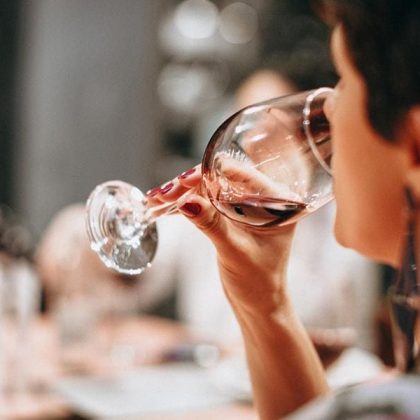Biodiversity in Maison Gabriel Meffre’s vineyards
Flora: the measure of a healthy soil
For a number of years, Maison Gabriel Meffre has been committed to an organic and responsible approach to wine-growing. In particular, this approach includes the use of plants as bioindicators”.
We observe the plants on our parcels because they provide information about the properties of the soil they grow in. These properties are the result of an interaction between natural environmental conditions and cultivation practices.
Nicolas Speranza, Vineyard Manager, explains:
<spanstyle=”color:#907b53″>”In one cubic metre of soil, we can find almost 99% of plants present in the environment. The soil contains thousands of seeds, which will only germinate if the conditions are favourable.”
Gérard Ducerf, botanist and author of ‘Encyclopédie des plantes bio-indicatrices’ (Encyclopaedia of bioindicator plants), works on the principle that seeds germinate when conditions approach those found in their “primary biotope”, i.e. the place they originally grew in.
Nicolas confirms this :
“A large quantity of a particular plant on a parcel, which dominates others, points to an imbalance. A balanced environment allows the growth of a wide variety of species. The presence of many and various plants between the rows of vines is a good sign. Organic viticulture uses no weed killers and leaves room for the growth of all plant species found on our parcels. If, when you are walking through the countryside, you see only poppies between the rows, then there is a serious imbalance!”
Plants as bioindicators: the first stage of caring for soils
As we have seen, bioindicator plants play an important role in the work of winegrowers by providing various information about the soil:
- Pollution : of agricultural, industrial or urban origin.
- Retention capacity : potential erosion and leaching.
- Characteristics : pH, calcium, clay, etc.
“Sometimes, following observation of plants that are naturally present, we sow oats or vetches, for example, which enrich the soil. The idea is to put the abilities of plants to work for the vineyard!”
enthuses Nicolas.
Biodiversity: a safe haven for beneficial organisms
On the parcels of Domaine de Longue Toque, currently in their final year of conversion to organic farming, no products that devastate beneficial organisms are used (pesticide or fungicide). In particular, this practice helps contain attacks by pests.
Nicolas explains :
“The use of pesticides allows certain species to proliferate. For example, when there is an invasion of snails, it is because there has been an imbalance. It is not normal for a population to proliferate it means that there is a lack of self-regulation in the environment. In the same way as a variety of flora is a sign of the soil’s health, a variety of beneficial insects indicates that the vineyard is in good health and makes it possible to protect it by respecting a natural balance.”
The fauna and flora that can be observed in the vineyards reflect the cultivation practices used and soil health. Nature offers very useful ways to understand and take care of our land, without having to be a botanical expert.
Maison Gabriel Meffre is careful to protect the biodiversity of its parcels. It has also carried out a diagnosis of the estate and is working in partnership with local organisations that protect fauna and flora to improve its knowledge. This knowledge and the resulting expertise in the field contribute to the quality of the grapes and future cuvées!
Rubrics
Découvrez plus d'articles...

The vineyard and wine cellar in winter
What happens in the world of wine during the winter period? After the hustle and bustle of autumn, the harvests and vinification process, comes winter, a season devoted to maturation and looking after the vines.

In 2018, we will continue to strive to be a Responsible Company!
In this new year, our wish to help build a world that respects both mankind and the environment is as strong as ever. This can be seen through the number of our projects for 2018 that are closely related to our convictions as a Responsible Winery. We’re delighted to be given the opportunity to tell you about them!

Discovering the art of pairing wine and chocolate
A morsel of white chocolate, Black Forest gâteau, pieces of stem ginger wrapped in chocolate, or Mexican chicken in chocolate sauce—all very appetising, but which wine would you serve with each one? Food and wine pairings factor in a combination of elements, such as the terroir, our powers of concentration, the circumstances of the tasting session, our sense memory and more. We guide you through some of the basic principles of this fascinating world!







